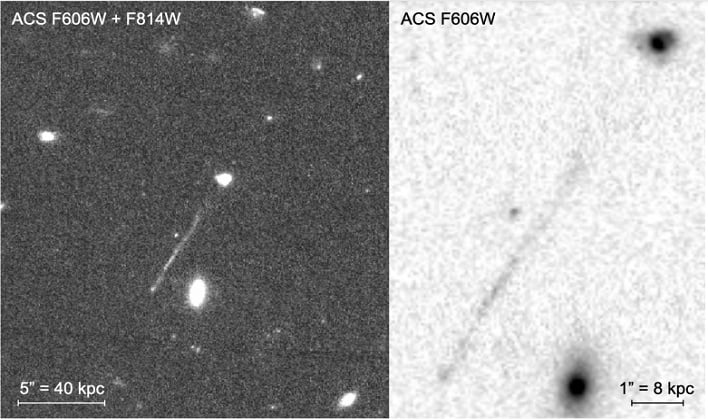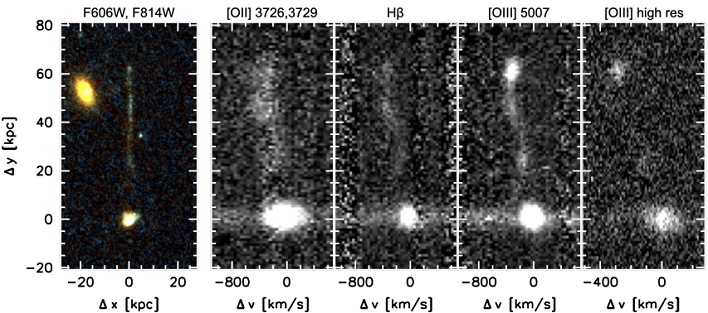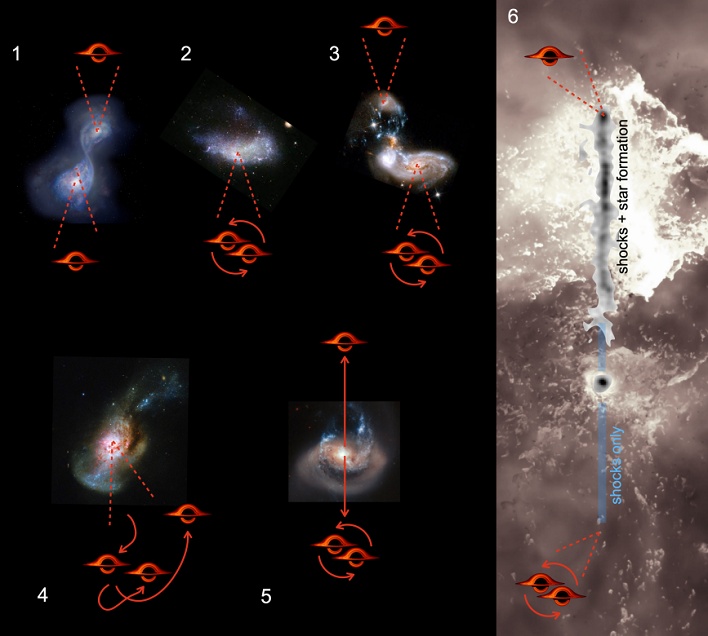Supermassive Black Hole Streaks Across The Galaxy, Leaving Trail Of Gas And Stars

This is not the first time a supermassive black hole has been found ejected from the center of its host galaxy. However, this is the first time one has been detected speeding across intergalactic space and believed to be inactive. The other active supermassive black holes were much easier to identify, due to the immense amounts of heat and light they are emitting as they consumed matter.
Lead researcher Pieter van Dokkum of Yale University and his colleagues stated in a recently published research paper, "The interaction of a runaway supermassive black hole (SMBH) with the circumgalactic medium (CGM) can lead to the formation of a wake of shocked gas and young stars behind it."

The paper states that there are a few ways a supermassive black hole can escape from the center of a galaxy. The first step is said to always be a galaxy merger, which then leads to the formation of a binary SMBH at the center of the merger remnant. If a third SMBH enters the picture, the three-body interaction can produce a large velocity to one of the SMBHs "leading to its escape from the nucleus." A third SMBH is not necessary for this to occur, as the eventual merger of the two SMBHs can provide the "kick" necessary to one through gravitational radiation recoil.

The team does recognize that there could be other explanations, such as a jet that could have left a trail of star formation in its wake. However, the team found no indicators of an astrophysical jet. Therefore, the team believes the best explanation is a runaway supermassive black hole.
"We make the case that the feature is the wake of a runaway SMBH, relying on the small number of papers that have been written on this topic in the past fifty years," remarked the researchers in the paper. It goes on to say, "This area could benefit from further theoretical work, particularly since these papers purpose a variety of formation mechanisms for the wakes."
The research paper was accepted for publication in The Astrophysical Journal Letters and is available to read on arXiv.

